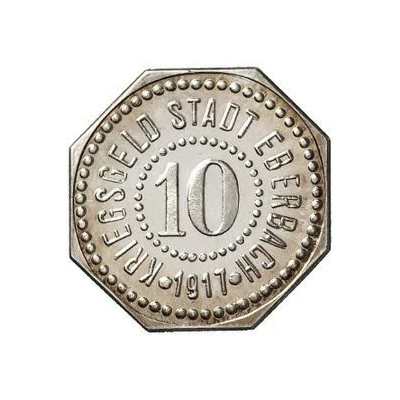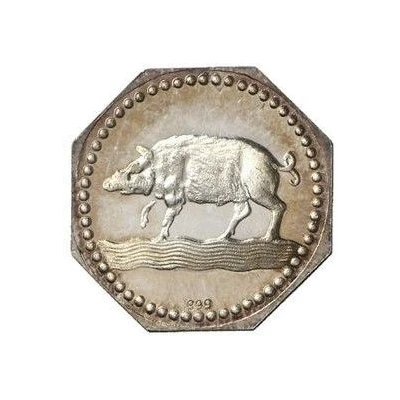


© Fritz Rudolf Künker GmbH & Co. KG, Osnabrück and Lübke & Wiedemann KG, Leonberg
10 Pfennigs Pattern
1917 year| Silver (.999) | - | 20.8 mm |
| Issuer | City of Eberbach (Federal state of Baden) |
|---|---|
| Emperor | William II (Wilhelm II) (1888-1918) |
| Type | Pattern |
| Year | 1917 |
| Value | 10 Pfennigs (10 Pfennige) (0.10) |
| Currency | Mark (1914-1924) |
| Composition | Silver (.999) |
| Diameter | 20.8 mm |
| Shape | Octagonal (8-sided) |
| Technique | Milled |
| Orientation | Medal alignment ↑↑ |
| Demonetized | Yes |
| Updated | 2024-10-04 |
| Numista | N#313049 |
|---|---|
| Rarity index | 97% |
Reverse
Boar to the left
Script: Latin
Lettering: 999
Edge
Plain
Interesting fact
One interesting fact about the Pattern 10 Pfennigs (Pattern) 1917 from City of Eberbach (Federal state of Baden) made of Silver (.999) is that it was designed by the artist Karl Goetz, who was a prominent German engraver and medalist. He is known for his work on various coins and medals, including the design of the German eagle and other national symbols. The coin's design features a depiction of a wolf, which is a symbol of the city of Eberbach, and is surrounded by intricate details and patterns. The use of silver in the coin's composition adds to its value and rarity, making it a highly sought-after collector's item among numismatists.